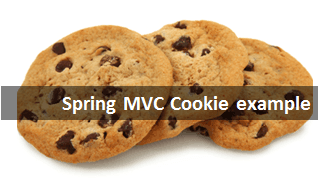
In this post we will see how to access and modify http cookies of a webpage in Spring MVC framework.
Read Http Cookie in Spring MVC
Spring 3 MVC framework provides a very useful annotation @CookieValue to access data set within any http cookie. This annotation can be leverage to fetch the cookie value without getting into hassle of fetching cookies from http request and iterating through the list. @CookieValue annotation can be used within Controller argument. It automatically bind the cookie value with method argument.
import org.springframework.web.bind.annotation.CookieValue;
import org.springframework.web.bind.annotation.RequestMapping;
//..
@RequestMapping("/hello.html")
public String hello(@CookieValue("foo") String fooCookie) {
//..
}Code language: Java (java)In above code snippet we defined a controller method hello() which is mapped to URL /hello.html. Also we bind the parameter String fooCookie using @CookieValue annotation. When spring maps the request, it checks http for cookie with name “foo” and bind its value to String fooCookie. No boiler plate code to iterate though list of cookies, just one line will do it all. One thing worth noting here is that we have not defined any default value for the String fooCookie. If Spring does not find the cookie with name “foo” in http request, it will throw an exception: java.lang.IllegalStateException: Missing cookie value ‘foo’ of type
java.lang.IllegalStateException: Missing cookie value 'foo' of type java.lang.String
at org.springframework.web.bind.annotation.support.HandlerMethodInvoker.raiseMissingCookieException(HandlerMethodInvoker.java:796)
at org.springframework.web.bind.annotation.support.HandlerMethodInvoker.resolveCookieValue(HandlerMethodInvoker.java:684)
at org.springframework.web.bind.annotation.support.HandlerMethodInvoker.resolveHandlerArguments(HandlerMethodInvoker.java:357)
at org.springframework.web.bind.annotation.support.HandlerMethodInvoker.invokeHandlerMethod(HandlerMethodInvoker.java:171)
at org.springframework.web.servlet.mvc.annotation.AnnotationMethodHandlerAdapter.invokeHandlerMethod(AnnotationMethodHandlerAdapter.java:440)
at org.springframework.web.servlet.mvc.annotation.AnnotationMethodHandlerAdapter.handle(AnnotationMethodHandlerAdapter.java:428)Code language: Java (java)In order to resolve this we must add default value to @CookieValue annotation so if Spring doesn’t find http cookie with that name, it binds the parameter with default value. Following is syntax for that:
import org.springframework.web.bind.annotation.CookieValue;
import org.springframework.web.bind.annotation.RequestMapping;
//..
@RequestMapping("/hello.html")
public String hello(
@CookieValue(value = "foo", defaultValue = "hello") String fooCookie) {
//..
}Code language: Java (java)We used value and defaultValue attribute of @CookieValue annotation. Thus if Spring doesn’t find any cookie with name ‘foo’ in http request, it binds the fooCookie parameter with value ‘hello’.
Setting Http Cookie in Spring MVC
We just saw how we can use @CookieValue annotation to auto-magically bind cookie value with a spring controller parameter. Now let us see how to set a cookie in a Spring MVC based application. For this actually we will use HttpServletResponse class’s method addCookie(). Spring does not provide any fancy way to set http cookie because it’s already taken care by servlets HttpServletResponse class. All you need to do it to use just one method addCookie(). Spring MVC can be used to get the response object. Once we have this object it’s just piece of cake. Consider below code:
import javax.servlet.http.Cookie;
import javax.servlet.http.HttpServletResponse;
import org.springframework.web.bind.annotation.CookieValue;
import org.springframework.web.bind.annotation.RequestMapping;
//..
@RequestMapping("/hello.html")
public String hello(HttpServletResponse response) {
response.addCookie(new Cookie("foo", "bar"));
//..
}
//..Code language: Java (java)In above code we just bind HttpServletResponse object to Spring method controller and used its addCookie method to save new Cookie. That’s it. One line of code will do it. One thing worth noticing here is that you can set the cookie expire time using setMaxAge method on Cookie class.
Cookie foo = new Cookie("foo", "bar"); //bake cookie
foo.setMaxAge(1000); //set expire time to 1000 sec
response.addCookie(foo); //put cookie in response Code language: Java (java)Complete Tutorial
Now we know the concept, let us use it and create a Spring MVC based application to track page hits. We will use Cookie to track page hit counter. For this tutorial I will be using following tools and technologies:
- Spring MVC 3.2.6.RELEASE
- Java 6
- Eclipse
- Maven 3
Following is the project structure.
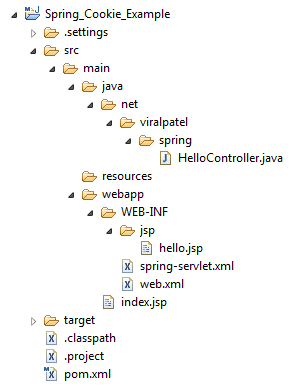
Create and copy following file contents in the project structure.
Maven configuration: pom.xml
<project xmlns="http://maven.apache.org/POM/4.0.0" xmlns:xsi="http://www.w3.org/2001/XMLSchema-instance"
xsi:schemaLocation="http://maven.apache.org/POM/4.0.0 http://maven.apache.org/maven-v4_0_0.xsd">
<modelVersion>4.0.0</modelVersion>
<groupId>net.viralpatel.spring</groupId>
<artifactId>Spring_Cookie_example</artifactId>
<packaging>war</packaging>
<version>1.0.0-SNAPSHOT</version>
<name>SpringMVCCookie</name>
<properties>
<org.springframework.version>3.2.6.RELEASE</org.springframework.version>
<project.build.sourceEncoding>UTF-8</project.build.sourceEncoding>
<compileSource>1.6</compileSource>
</properties>
<dependencies>
<dependency>
<groupId>javax.servlet</groupId>
<artifactId>servlet-api</artifactId>
<version>2.5</version>
<scope>provided</scope>
</dependency>
<!-- Spring MVC -->
<dependency>
<groupId>org.springframework</groupId>
<artifactId>spring-web</artifactId>
<version>${org.springframework.version}</version>
</dependency>
<dependency>
<groupId>org.springframework</groupId>
<artifactId>spring-webmvc</artifactId>
<version>${org.springframework.version}</version>
</dependency>
<!-- JSTL taglib -->
<dependency>
<groupId>taglibs</groupId>
<artifactId>standard</artifactId>
<version>1.1.2</version>
</dependency>
<dependency>
<groupId>javax.servlet</groupId>
<artifactId>jstl</artifactId>
<version>1.1.2</version>
</dependency>
</dependencies>
<build>
<finalName>springcookie</finalName>
</build>
<profiles>
</profiles>
</project>
Code language: HTML, XML (xml)Maven configuration is simple. We just need Spring MVC and JSTL dependency.
Deployment description: web.xml
<?xml version="1.0" encoding="UTF-8"?>
<web-app xmlns:xsi="http://www.w3.org/2001/XMLSchema-instance"
xmlns="http://java.sun.com/xml/ns/javaee" xmlns:web="http://java.sun.com/xml/ns/javaee/web-app_2_5.xsd"
xsi:schemaLocation="http://java.sun.com/xml/ns/javaee http://java.sun.com/xml/ns/javaee/web-app_2_5.xsd"
id="WebApp_ID" version="2.5">
<display-name>Spring MVC Http Cookie</display-name>
<welcome-file-list>
<welcome-file>hello.htm</welcome-file>
</welcome-file-list>
<servlet>
<servlet-name>spring</servlet-name>
<servlet-class>org.springframework.web.servlet.DispatcherServlet</servlet-class>
<load-on-startup>1</load-on-startup>
</servlet>
<servlet-mapping>
<servlet-name>spring</servlet-name>
<url-pattern>*.htm</url-pattern>
</servlet-mapping>
</web-app>
Code language: HTML, XML (xml)Web.xml is quite simple too. We just need to configure Spring’s DispatcherServlet with *.htm url pattern.
Spring Configuration: spring-servlet.xml
<?xml version="1.0" encoding="UTF-8"?>
<beans xmlns="http://www.springframework.org/schema/beans"
xmlns:xsi="http://www.w3.org/2001/XMLSchema-instance"
xmlns:context="http://www.springframework.org/schema/context"
xmlns:mvc="http://www.springframework.org/schema/mvc"
xsi:schemaLocation="http://www.springframework.org/schema/beans http://www.springframework.org/schema/beans/spring-beans.xsd
http://www.springframework.org/schema/context http://www.springframework.org/schema/context/spring-context.xsd
http://www.springframework.org/schema/mvc http://www.springframework.org/schema/mvc/spring-mvc.xsd">
<context:annotation-config />
<context:component-scan base-package="net.viralpatel.spring" />
<bean id="viewResolver"
class="org.springframework.web.servlet.view.InternalResourceViewResolver">
<property name="viewClass"
value="org.springframework.web.servlet.view.JstlView" />
<property name="prefix" value="/WEB-INF/jsp/" />
<property name="suffix" value=".jsp" />
</bean>
</beans>
Code language: HTML, XML (xml)In spring-servlet.xml we just defined component scan to load @Controller classes. Also we defined a view resolver that will points to JSPs within /WEB-INF/jsp/ folder.
JSP file: hello.jsp
<%@ taglib prefix="c" uri="http://java.sun.com/jsp/jstl/core" %>
<html>
<head>
<title>Spring MVC Cookie example</title>
</head>
<body>
<h1>Spring MVC Cookie example</h1>
Page hit counter: <b> ${cookie.hitCounter.value} </b>
</body>
</html>Code language: HTML, XML (xml)This JSP displays the hit counter. It prints the counter value using tag ${cookie.hitCounter.value}.
Spring Controller: HelloController.java
package net.viralpatel.spring;
import javax.servlet.http.Cookie;
import javax.servlet.http.HttpServletResponse;
import org.springframework.stereotype.Controller;
import org.springframework.web.bind.annotation.CookieValue;
import org.springframework.web.bind.annotation.RequestMapping;
@Controller
public class HelloController {
@RequestMapping(value = "/hello.htm")
public String hello(
@CookieValue(value = "hitCounter", defaultValue = "0") Long hitCounter,
HttpServletResponse response) {
// increment hit counter
hitCounter++;
// create cookie and set it in response
Cookie cookie = new Cookie("hitCounter", hitCounter.toString());
response.addCookie(cookie);
// render hello.jsp page
return "hello";
}
}Code language: Java (java)The logic to fetch hit counter from cookie and set it back is written in HelloController. We used @CookieValue annotation to map hitCounter cookie to Long hitCounter parameter. Notice how we mapped java.lang.Long value. Spring automatically converts String from Cookie to Long value.
Demo
Open your favorite web browser and point to below URL: http://localhost:8080/Spring_Cookie_Example/hello.htm Refresh page 2-3 times and see how hit counter value is incremented.
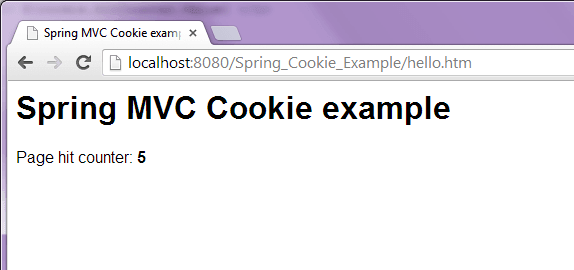
Download Source Code
Spring_Cookie_Example.zip (8 KB)
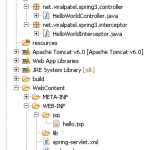
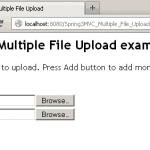
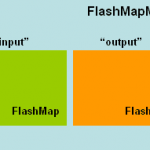
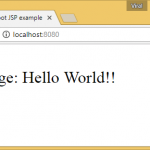
In Spring 4, WebUtils is also useful:
http://docs.spring.io/spring/docs/current/javadoc-api/org/springframework/web/util/WebUtils.html#getCookie-javax.servlet.http.HttpServletRequest-java.lang.String-
my cookie value is reflected only on refresh and not on load.
How to implement hitcounter using database, jsp, spring controller. Means count should be stored in database.
how to implement hitcounter using jsp(ajax call controller), springcontroller,hibernate dao .
counter should be saved in database
please guide me . Thanks
Hi Sir
am also set the setup whatever your said same as am implemented but not no use of that one because of the when the refresher the browser but not increase the number of increment of the number please how to rectify the or resolve the that issue